On the tract of land in Hartford where Trinity College educated and graduated its earliest classes, town and gown came together Tuesday to celebrate the 200 years since its story began.
In the span of time in 1823 between the General Assembly’s decision to grant the College’s charter, and the College’s construction of its own campus buildings, the first nine students began meeting in the basement of a church, noted Trinity Board Chair Lisa Bisaccia ’78.
A far larger group applauded the moment on May 16, Charter Day, that Trinity’s flag was raised again at that site, home now to the State Capitol.
“Our bicentennial theme, ‘committed to the future since 1823,’ is a reminder that today, we must both honor our past, but also pledge to continue working for a better future,” Trinity College President Joanne Berger-Sweeney told those assembled for the flag raising.
The value that Trinity places on working toward a sustainable future was illustrated by Berger-Sweeney’s announcement both at the State Capitol, and later, on campus, that the College is now a designated arboretum–one of only 11 in the state. Students and faculty have thus far labeled 37 species of trees on campus, including two that are the largest of their kind in Connecticut.
Berger-Sweeney also spoke of the signature programs and partnerships that connect the College and city, including the Learning Corridor, Hartford Magnet Trinity College Academy, and the Liberal Arts Action Lab. This year, Trinity received national recognization through Campus Compact’s Richard Guarasci Award for Institutional Transformation for its work aligning teaching, research, practice, and values in service of the common good.
Life at Trinity is accompanied by the “soundtrack” that features the annual events, many of which are open to the community, including Samba Fest and Hip Hop Festival, carillon concerts, and a cappella performances, Berger-Sweeney said.
Gov. Ned Lamont, Lt. Gov. Susan Byciewisz, and Speaker of the House Mark Ritter, also offered remarks on the College’s birthday, referencing the many student interns and alumni who have shaped the state.
Those who have left an imprint include Jason Rojas M’12, house majority leader and Berger-Sweeney’s chief of staff; Paul Mounds ’07, Lamont’s former chief of staff and general counsel; and Nicole Hockley ’92, co-founder and CEO of Sandy Hook Promise, and this year’s commencement speaker.
On campus, the president led a ceremony which included a tree planting–a return to an old tradition that began when the College moved to its current campus from the State Capitol site–along with the premiere of a carillon piece Fanfare 1823 written and performed by Ellen Dickinson.
“Why is it important for us to create rituals to mark our time together?,” said Berger-Sweeney. “Well, one reason is to build our sense of community and what it means to share our lived experiences. Another is to express a communal statement of what we believe and what we value.”
Watch a video of the day’s events.
Cheers
Cheers
President Joanne Berger-Sweeney addresses a crowd at the State Capitol prior to the flag raising.
Trinity Board Chair Lisa Bisaccia ’78 addresses the Trinity community.
Susan Massino, Trinity College Vernon D. Roosa Professor of Applied Science (left), and Lisa Bisaccia ’78, Trinity Board Chair (center), partner on planting a new tree on the Main Quad.
President Joanne Berger-Sweeney and Trinity mascot, Banty, raise their glasses for a lemonade toast.
Amanda Matava, digital archivist, demonstrates how to access the content of the College's newest compendium of history, called Trinitiana.
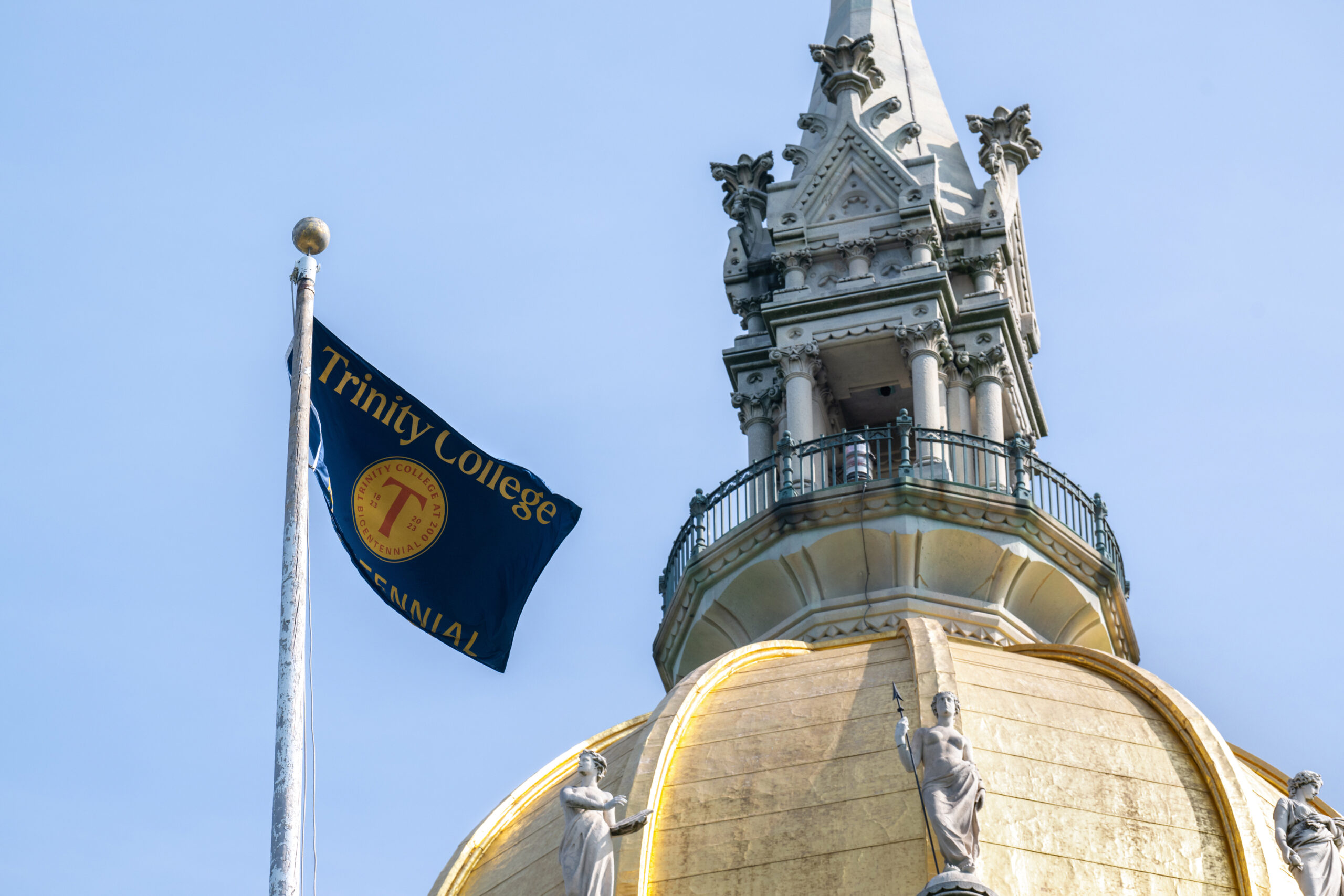
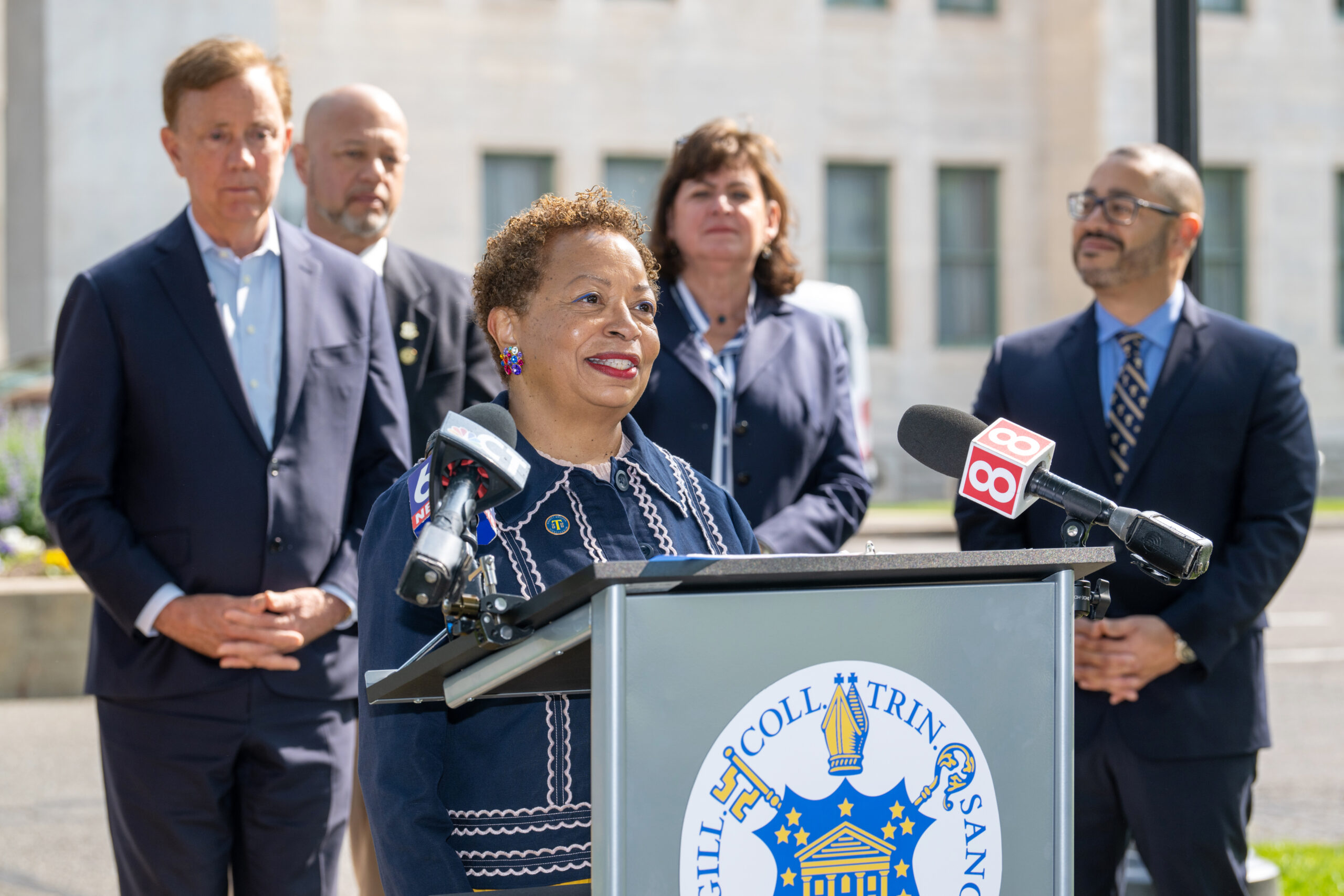
President Joanne Berger-Sweeney addresses a crowd at the State Capitol prior to the flag raising.
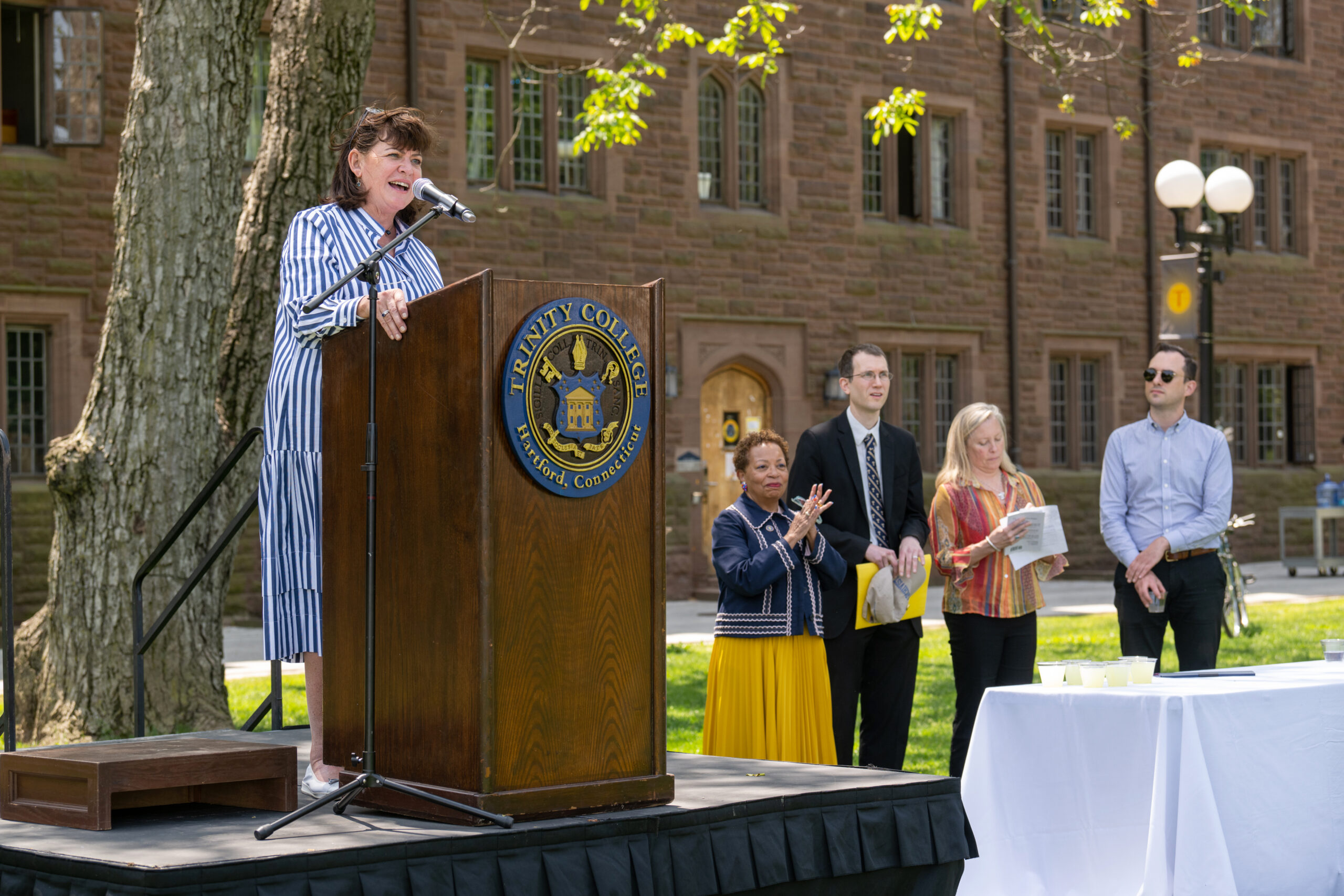
Trinity Board Chair Lisa Bisaccia ’78 addresses the Trinity community.
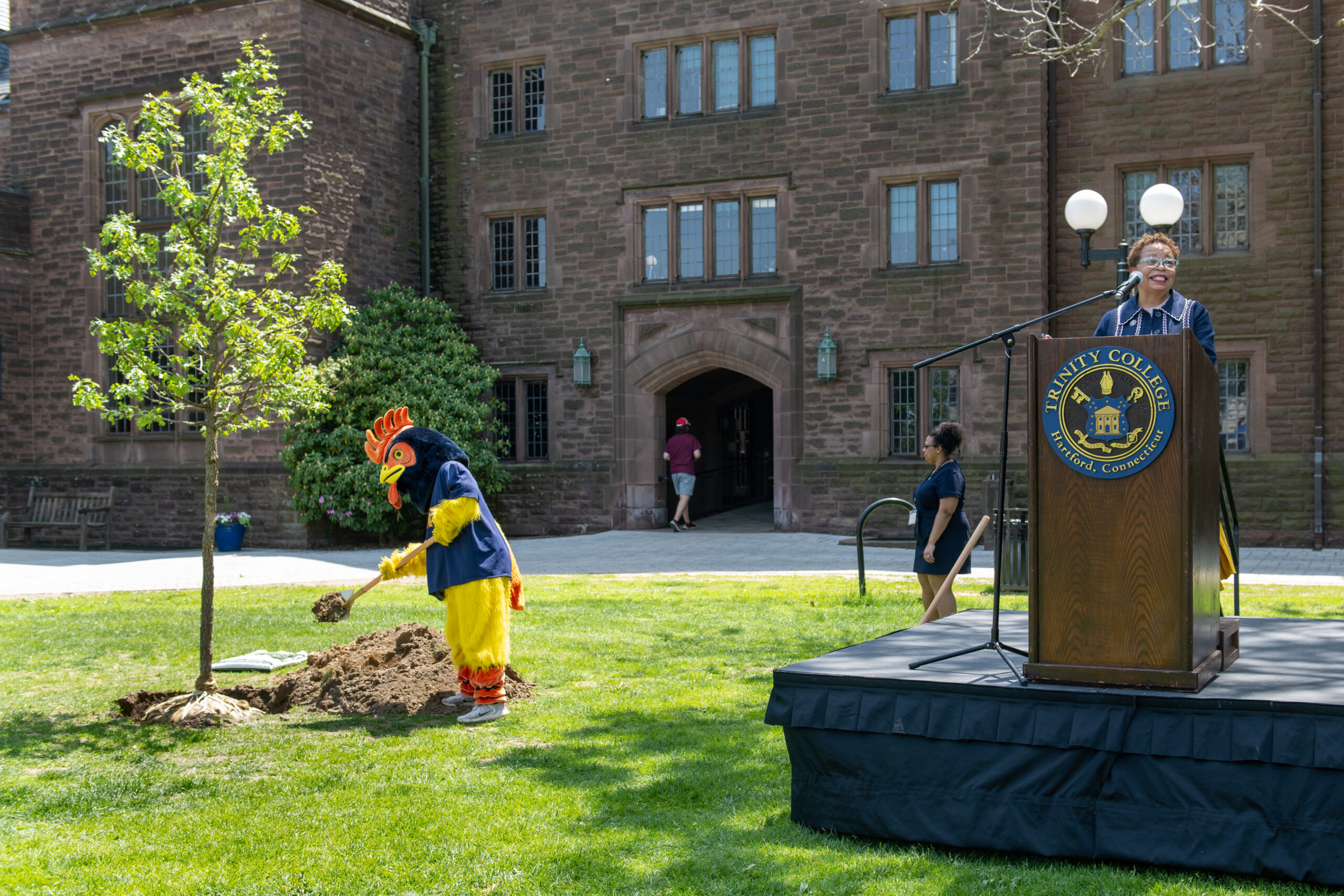

Susan Massino, Trinity College Vernon D. Roosa Professor of Applied Science (left), and Lisa Bisaccia ’78, Trinity Board Chair (center), partner on planting a new tree on the Main Quad.

President Joanne Berger-Sweeney and Trinity mascot, Banty, raise their glasses for a lemonade toast.
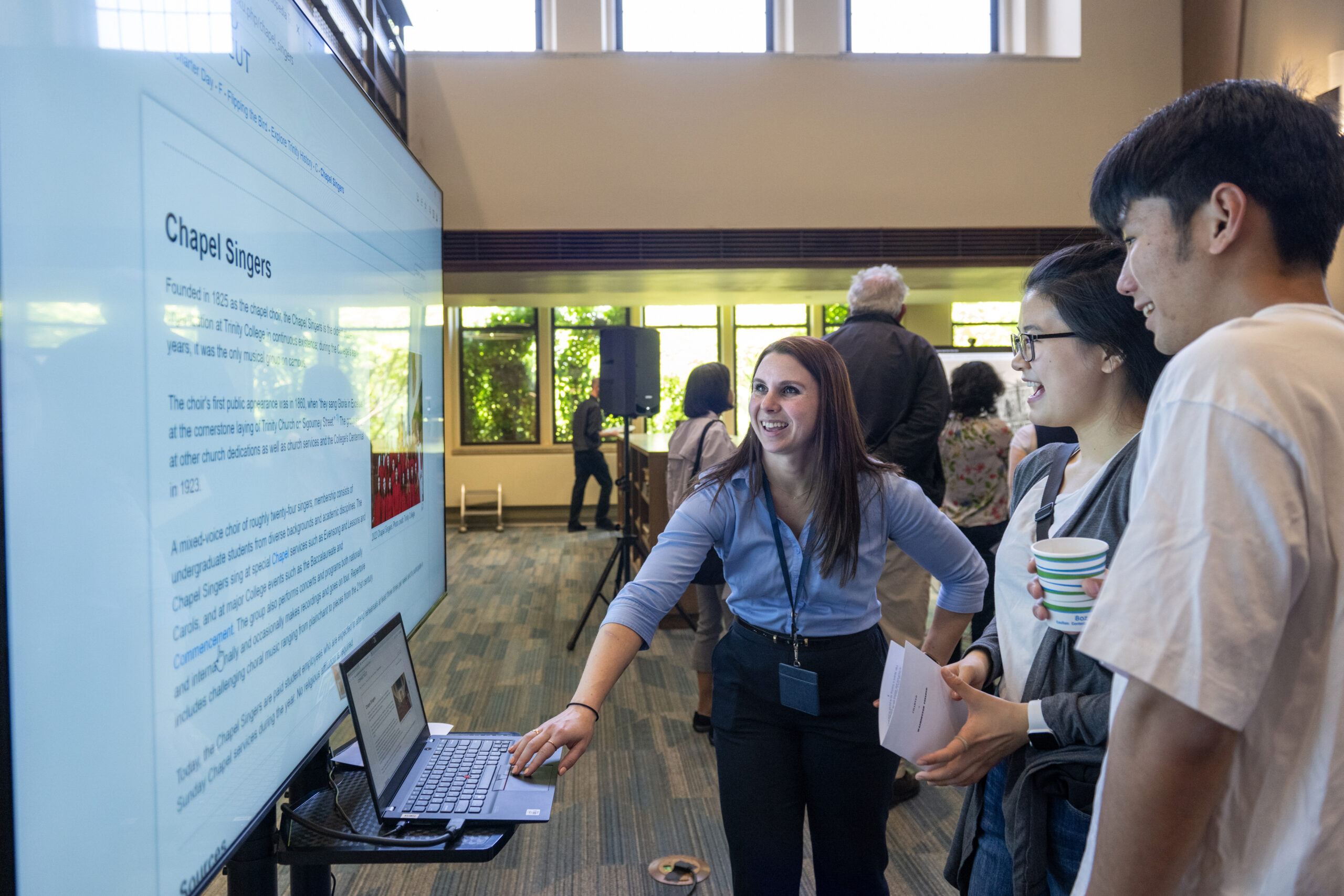
Amanda Matava, digital archivist, demonstrates how to access the content of the College's newest compendium of history, called Trinitiana.
